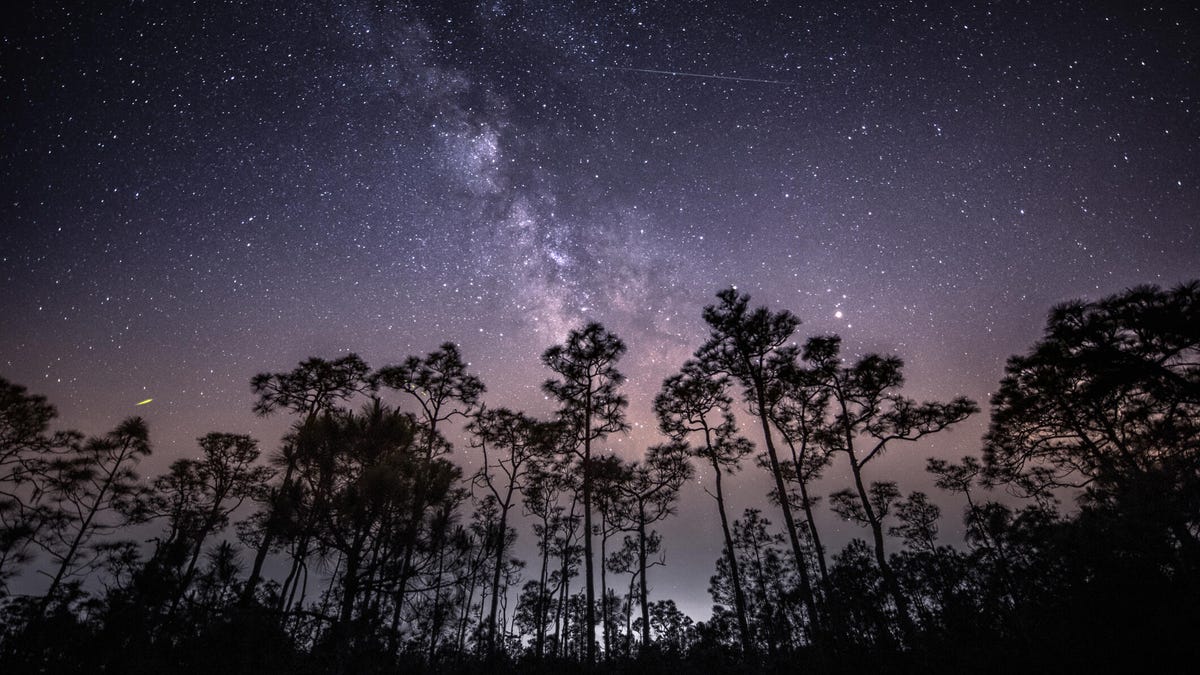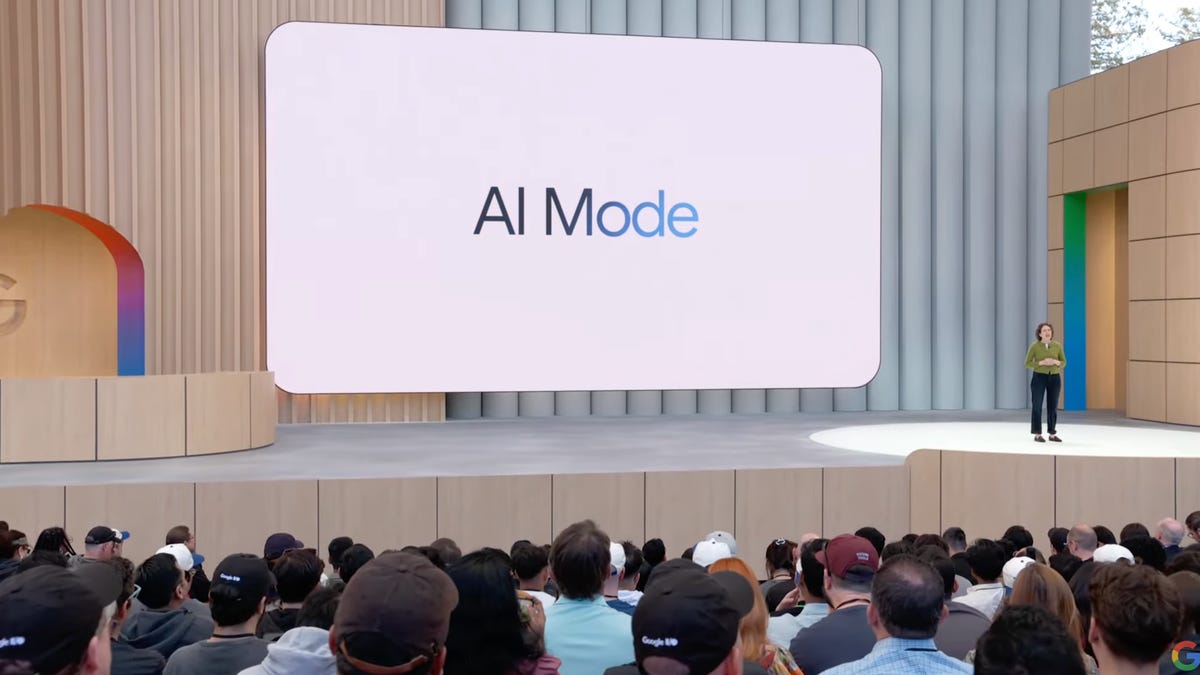Technologies
Set Your Alarm Now to Watch This Weekend’s Dazzling Meteor Shower
If you’re willing to get up early on Sunday, you can enjoy a fascinating view of the night sky.

If you’re looking for something breathtaking to do this weekend, set an alarm clock for early Sunday and look to the sky. The Eta Aquarid meteor shower is set to peak this weekend, with the potential for dozens of meteors each hour to shoot across the sky in the predawn hours of Sunday morning. While the number of meteors visible per hour will depend on where you’re located, even those in less-than-ideal conditions should see up to 10 meteors per hour.
The Eta Aquarid meteor shower occurs annually between April 15 and May 27, peaking in early May. Meteors are leftover comet particles that come from broken asteroids. The Eta Aquarid meteor shower is created from dust grains shed by Halley’s Comet when it enters the inner solar system.
According to NASA, the Eta Aquarid meteors are notable for their speed, with the possibility of meteors in the stream hitting a maximum rate of 148,000 miles per minute as they reach the Earth’s atmosphere. Their speed allows them to shed debris as they burn up in the atmosphere leaving what NASA calls «trains» in their wake. Those trains are streaks of light that can last in the sky for minutes after the meteors have passed by.
How to watch the Eta Aquarid meteor shower
As with any other meteor shower, getting the most out of the Eta Aquarid viewing experience has everything to do with location. Those in the southern hemisphere will be able to see more meteors, but those north of the equator will still get a decent amount.
When to get up?
Timing matters in viewing the Eta Aquarids. While they’ll technically be visible all night, viewers will have the best chance of seeing them in the predawn hours on Sunday morning when the sky is darkest. And since the moon will be 14% full that night, light from the moon shouldn’t disrupt viewing.
The nice thing about the Eta Aquarid meteor shower is that it will be visible throughout the night. However, several factors can affect when is the best time to view the shower, including time and cloud cover. Keep an eye on your local weather forecast to determine how cloudy it’s expected to be in your area, and consider that the darkest periods of night usually occur after midnight, leading up to dawn.
What to look for?
You’re looking for fiery streaks shooting across the sky. Think of meteors as dusty, leftover particles from broken asteroids. As asteroids travel around the sun, dust breaks away and take their own path through space. As Earth passes through those dusty areas, comprised of meteors, the meteors collide with the Earth’s atmosphere and disintegrate. From our vantage point on Earth, we see the meteors blow up in a fiery event that creates streaks across the sky.
Leave the city behind
Speaking of light pollution, the chances of seeing the Eta Aquarids when looking to the sky over a big city is nearly zero. Instead, it’s best to get as far away from city lights that pollute the night sky. NASA also recommends lying on your back and facing east for the best chance of seeing as many meteors as possible.
Technologies
You Can’t Trust Your Car’s Driving Assistance System Yet, AAA Report Finds
Both hands-on and hands-off systems required human intervention to avoid accidents in this study.
Technologies
Google’s AI Mode Is Getting New Agentic Features for Restaurant Reservations and More
AI Mode can now do most of the work to find dinner reservations for you.

Google’s AI Mode is getting new agentic capabilities and expanding to 180 new countries and territories around the world, Google announced Thursday. AI Mode allows you to ask questions directly to Google and it’ll kick off a series of searches on your behalf. From there, it will surface relevant information to your query without the need to do any of the deep research yourself. It changes the way you search for things online, and it’s getting even smarter with this latest rollout.
Powered by DeepMind’s Project Mariner, the latest additions bring us further into the agentic AI future we’ve been promised for some time, directly from a search box. Instead of just finding things for you, AI Mode can now do things for you, like finding dinner reservations, flights or concert tickets. The update also brings personalized recommendations and link-sharing capabilities for easier collaboration with friends and family.
Most of the new features are either limited to premium AI subscribers and tucked behind an experiment in Google Labs, but it might not take long before they’re a standard part of your future search experience.
Google did not immediately respond to CNET’s request for further comment.
Restaurant recommendations
Instead of searching for restaurant reservations and then clicking on a specific website to make a reservation, AI Mode surfaces everything you need to complete the action right there. Since it’s contextually aware, you can add specificities to your query that a typical Google search wouldn’t handle well.
You can add the type of cuisine, number of people, time and location to a single query, and AI Mode will get to work and display real-time restaurant reservation time slots to choose from.
Google says it’s partnered with OpenTable, Resy, Tock, Ticketmaster and several other companies to make finding and doing what you want easier, since you won’t have to put in the legwork yourself.
This feature is currently rolling out to Google AI Ultra subscribers in the US who have enabled the specific experiment in Labs.
Personalized recommendations
Another experiment that’s currently available in the US (that also needs to be enabled in Labs) is personalized recommendations. Google says it’s starting with dining-related recommendations, which implies more options will be on the way in the future.
The experiment will use your past conversations with AI Mode, places you’ve interacted with on Search and Maps to provide suggestions tailored specifically to you.
Share AI Mode links with others for collaboration
If you’re planning a vacation or a party, you can now share your research directly with others with a new link-sharing feature built into AI Mode. People who interact with the link will be sent to the last response sent by AI Mode and can continue the conversation on their own to do more exploration on the topic. The original sender of the links can manage them and delete them at any time.
For more, don’t miss everything Google announced at its Pixel 10 event.
Technologies
IPhone or Android, Here’s How to Finally Escape That Endless Group Chat
Done with a group chat? Here’s how to ghost it on any service.

One reason people prefer group chats in Apple’s iMessage or RCS texting is the extra control and security these platforms provide. If everyone in your group is using iPhones, or if you’re on Android chatting through RCS, you’ll get features like typing indicators, high-quality media sharing, and the option to mute or leave a conversation when you need fewer notifications.
The biggest advantage is privacy. Both iMessage and RCS group chats offer end-to-end encryption, so your conversations stay secure. The only time that doesn’t apply is when a thread includes a mix of iPhone and Android users, which limits encryption support.
Knowing these differences can help you manage your chats more effectively, whether you’re keeping up with friends, planning events, or just looking for a little more control over your notifications.
And with RCS support with iOS 18, group chats that include a mix of iPhone and Android participants have more features than ever — but it’s not at the level you’ll experience when a conversation is fully on iMessage or Google Messages. «Green bubble chats» from an iPhone to an Android phone can now include typing indicators, higher-quality media and easier group chats.
However, RCS conversations between the iPhone and Android phones don’t include encryption now, but it should be added in a future update. This will hopefully give these conversations a similar level of privacy that we expect when using chat services like iMessage, WhatsApp or Signal.
Regardless of how you’re in a group chat with others, you can leave a chat. Here are the steps to leave any conversation from your phone’s texting app, regardless of whether it’s happening on iMessage, RCS or as a mixed MMS chat.
Leaving group chats on an iPhone
You can leave group conversations on your iPhone in two ways. You can either mute a chat,which keeps you in a conversation but you no longer receive notifications about it, or you can outright leave and no longer have access to the chat.
On an iPhone, open Messages and go to the chat thread you want to leave. At the top of the screen are conversation controls, a group of icons with the participants. Tap this to open a pop-up menu. As long as your conversation has four or more participants, iOS gives you the ability to tap Leave this Conversation with red text. If your chat has three or fewer participants, though, the option is grayed out, but you can tap Hide Alerts to prevent the conversation from notifying you further. Tapping Hide Alerts also allows you to mute a conversation, letting you keep access to a chat without necessarily leaving it. These steps apply to both iMessage conversations and to those over RCS.
Hide and block MMS chats on an iPhone
Although you can’t officially leave MMS group chats, you can hide or block the conversation. It’s not as good as outright leaving a conversation (other participants will still see you as in it), but you at least have no personal evidence of the conversation continuing.
On an iPhone, visit the group chat and tap the conversation controls. Instead of seeing Leave this conversation, you will see the option to Delete and Block this conversation. If you’d rather just mute the conversation instead of deleting and blocking it, you can hit Hide Alerts to mute it.
Leave group chats on an Android phone
On an Android phone using Google Messages, visit the chat thread you want to leave. Tap the conversation’s name to bring up the Group Details menu. Within this menu is the Leave Group button. Unlike with iMessage, you can leave chats with as few as three participants.
If you want to just mute notifications, tap Notifications on the Group Details screen to bring up a window with notifications controls. This includes options to make the conversation stay Silent to prevent it from ringing your chat, and if you tap Lock Screen, a pop-up menu will give you the option to prevent notifications. Tap Don’t show notifications at all to enable.
Hide and block MMS chats on an Android phone
On an Android phone with Google Messages, follow the same steps to access options for controlling notifications. This includes visiting the MMS chat thread and then tapping either the name of the conversation or the names of the participants at the top to bring up the Group Details menu. You won’t see a Leave Group option like you did with an RCS thread, but you do get the same ability to tap Notifications to access controls for hiding the conversation. This includes the same options for turning the conversation to Silent and to select Don’t show notifications at all.
SMS vs. MMS vs. RCS
SMS stands for Short Message Service and debuted in 1992. Text messages are limited to 160 characters. MMS stands for Multimedia Messaging Service and supports sending photos, videos or other files and messages longer than 160 characters. MMS supports a group of people chatting in a single conversation thread, while SMS can text multiple people at once but is sent as individual messages to each person. RCS, which launched 15 years ago, is short for Rich Communication Services and can show typing indicators, read receipts and has end-to-end encryption.
While cross-platform chat apps like WhatsApp, Signal and Telegram have better controls for conversations, encryption and privacy, regardless of the type of phone participants are using, they don’t support SMS, MMS or RCS. That’s why the default messaging app on most phones is still widely used, even if it means that a group chat is on a less feature-filled, unsecured standard like MMS.
-

 Technologies3 года ago
Technologies3 года agoTech Companies Need to Be Held Accountable for Security, Experts Say
-

 Technologies2 года ago
Technologies2 года agoBest Handheld Game Console in 2023
-

 Technologies2 года ago
Technologies2 года agoTighten Up Your VR Game With the Best Head Straps for Quest 2
-

 Technologies4 года ago
Technologies4 года agoVerum, Wickr and Threema: next generation secured messengers
-

 Technologies4 года ago
Technologies4 года agoGoogle to require vaccinations as Silicon Valley rethinks return-to-office policies
-

 Technologies4 года ago
Technologies4 года agoBlack Friday 2021: The best deals on TVs, headphones, kitchenware, and more
-

 Technologies4 года ago
Technologies4 года agoOlivia Harlan Dekker for Verum Messenger
-

 Technologies4 года ago
Technologies4 года agoiPhone 13 event: How to watch Apple’s big announcement tomorrow

